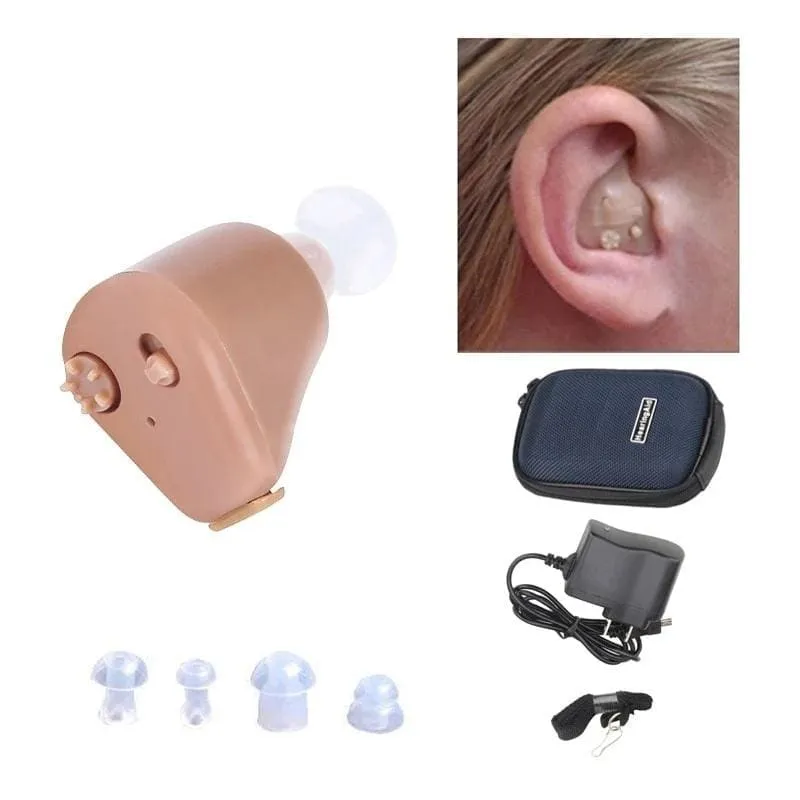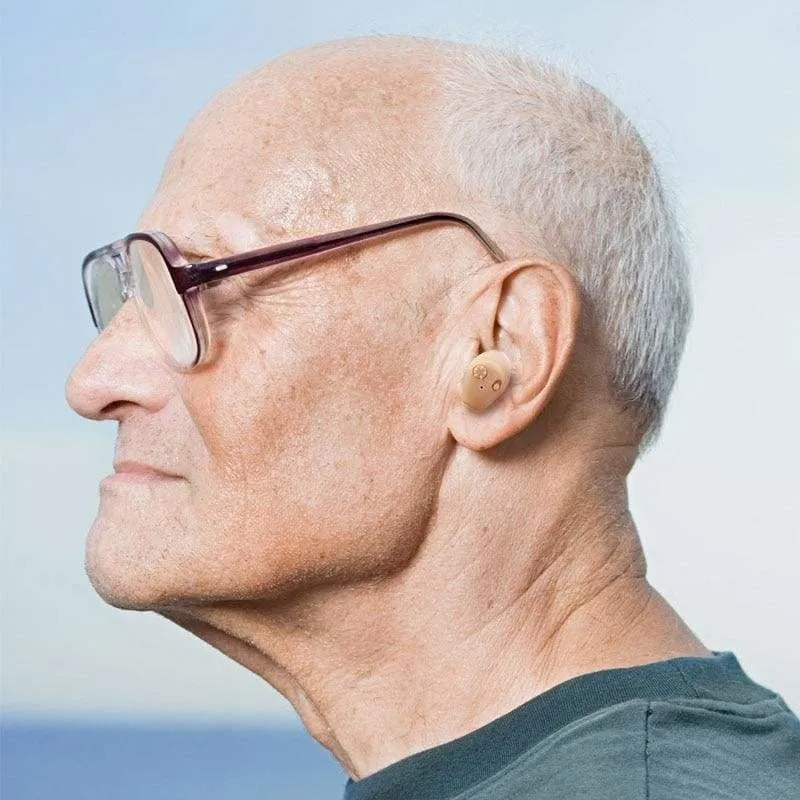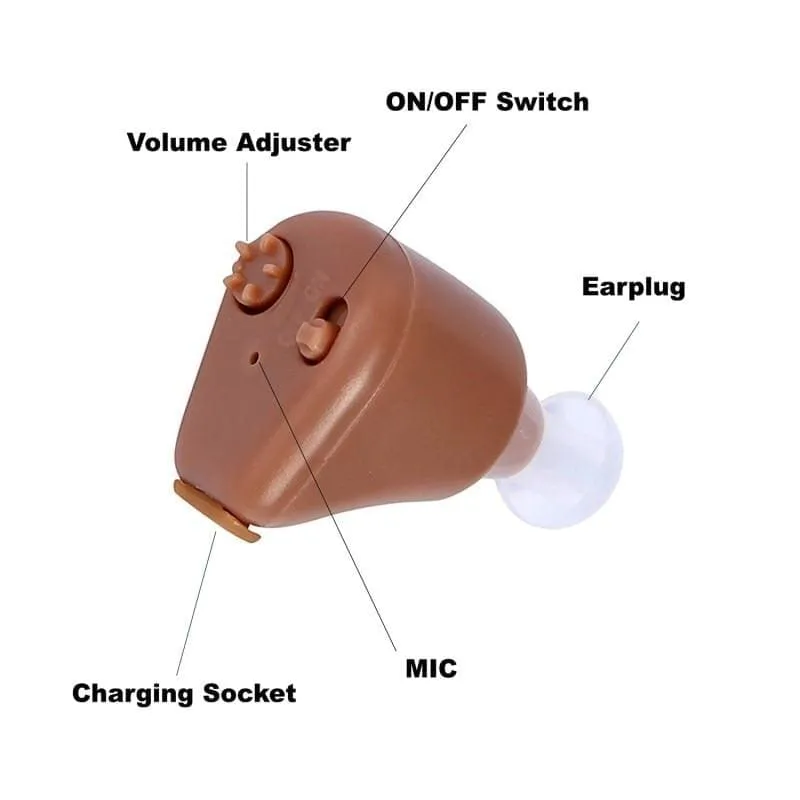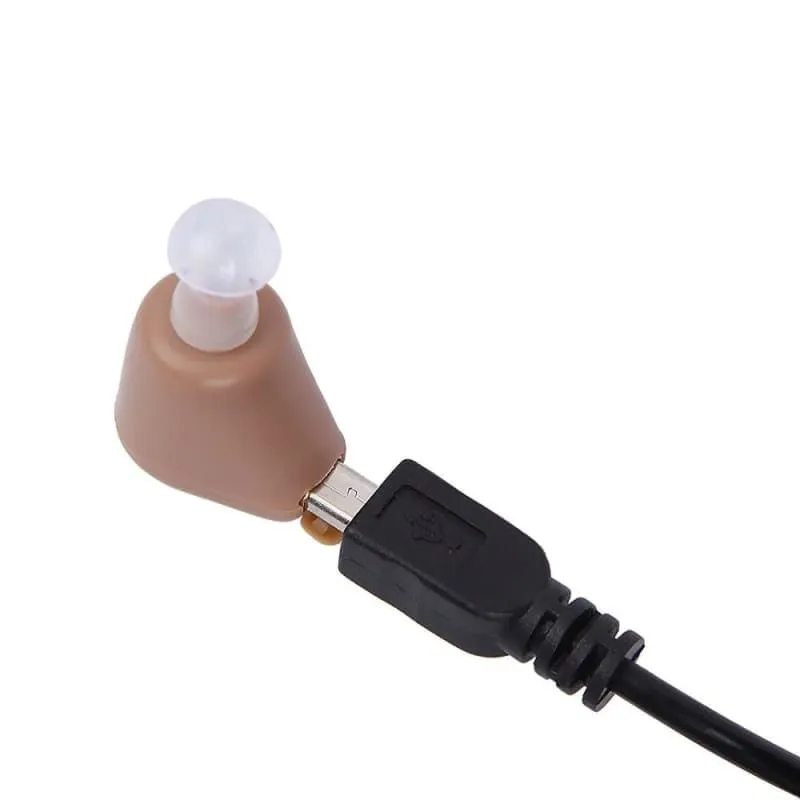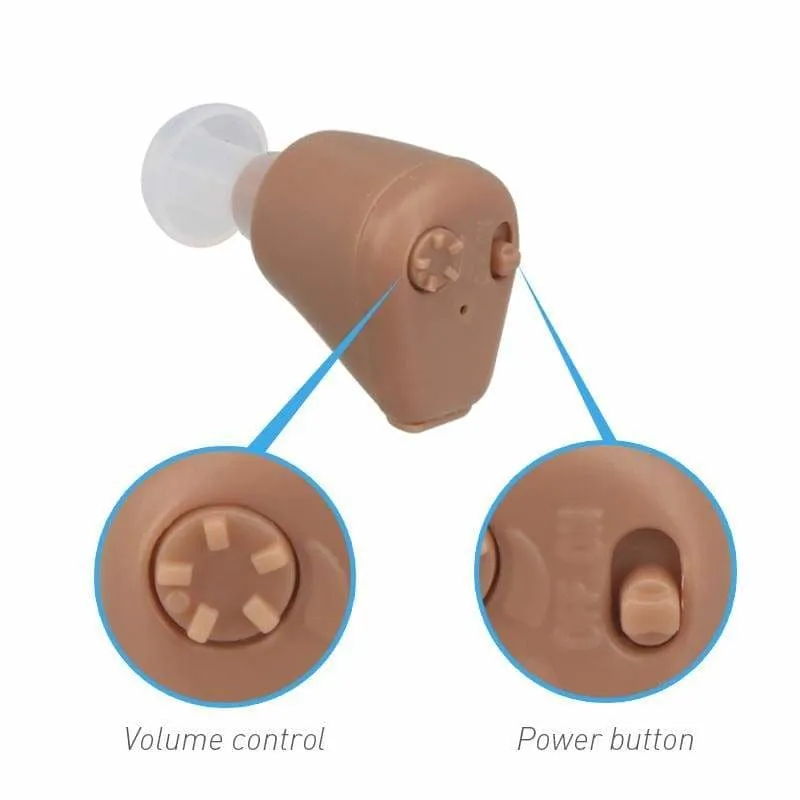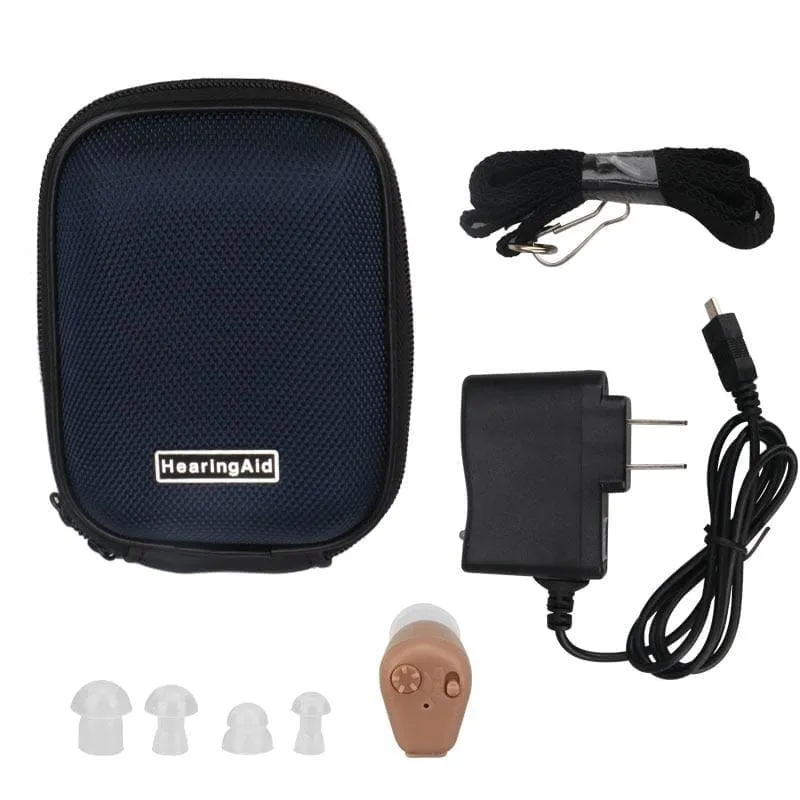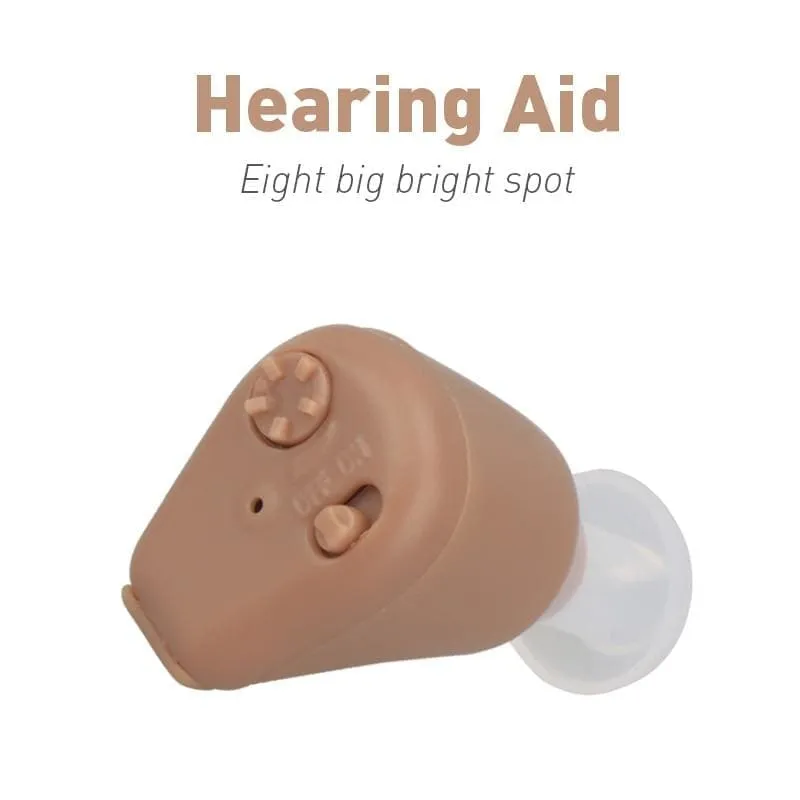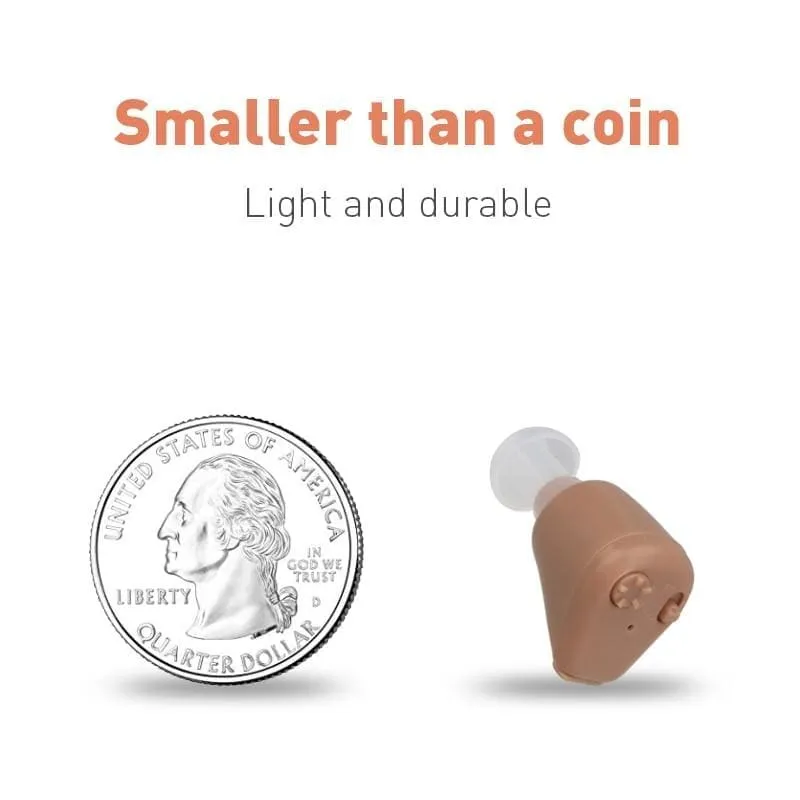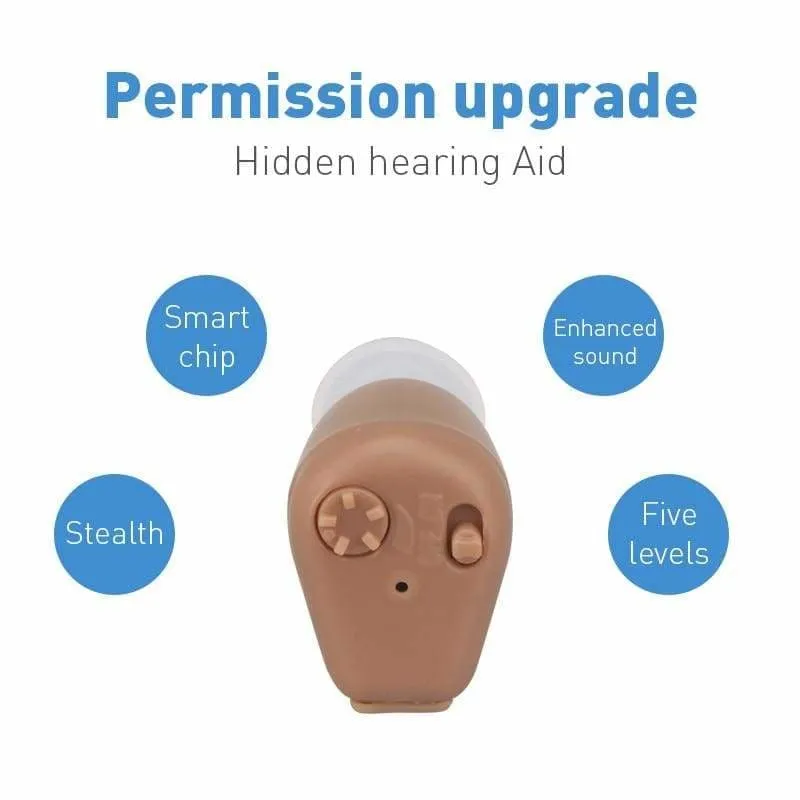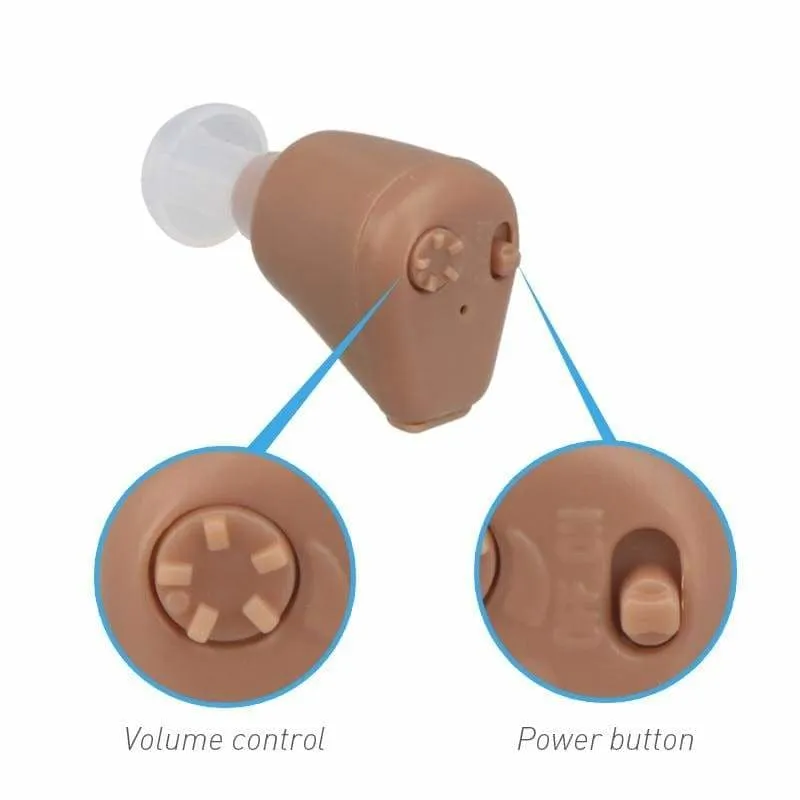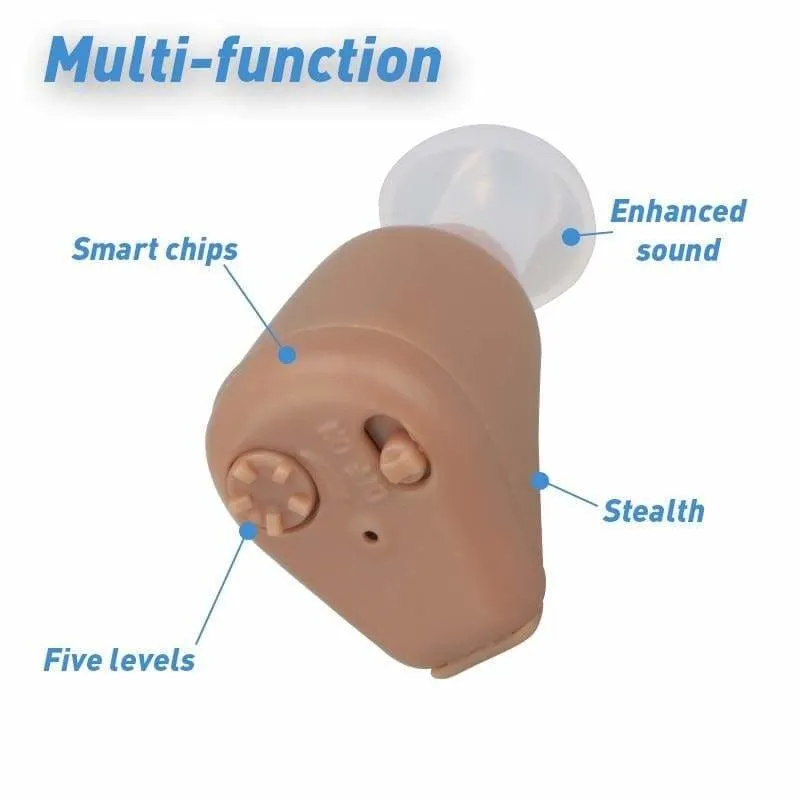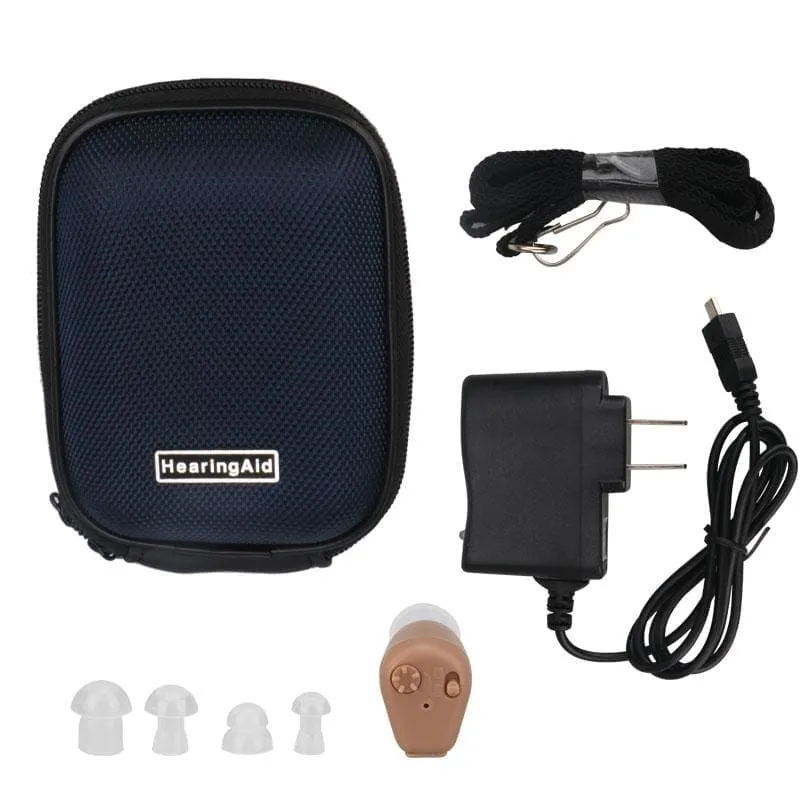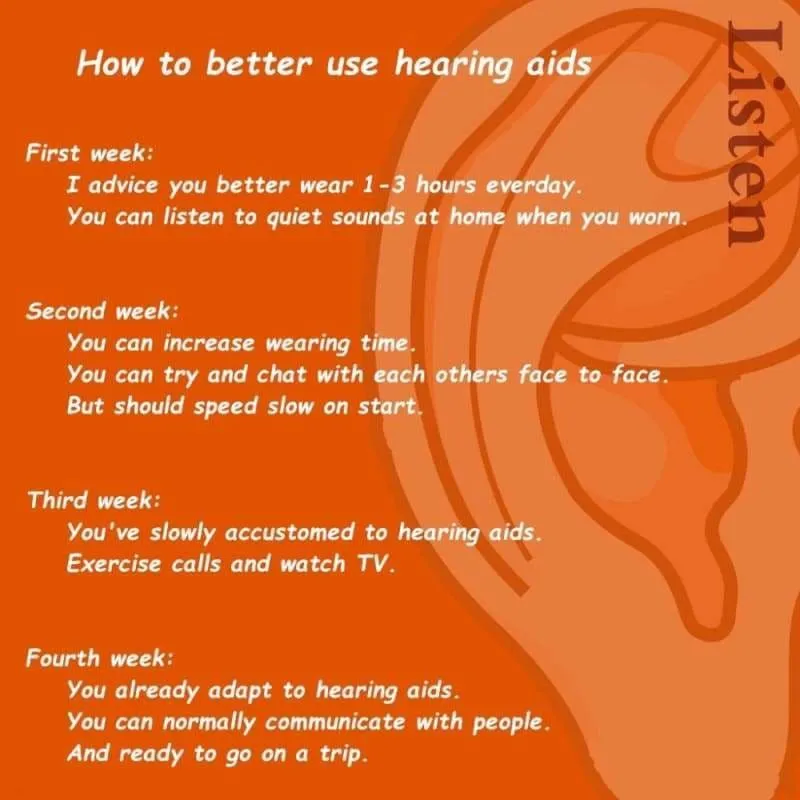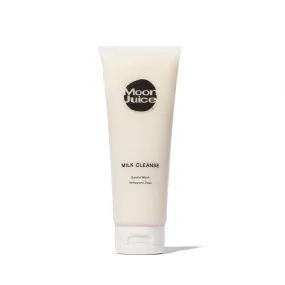🔥🔥 93% OF CUSTOMERS BUY 3 OR MORE 🔥🔥
Rechargeable Mini Hearing Aids !!!
Being unable to hear someone clearly while talking makes anyone unconfidence. Is your relative also having such the problem? With the rechargeable digital hearing aid, there will be solved! This is the most innovative hearing aid on the market. It is very small and has a beige color similar to the skin tones, so it is not easy to see when wearing. Our hearing aid is a powerful device with a crisp, clear sound – WITHOUT feedback or whistling. The S1 has an easy to use volume control unit so you can adjust your hearing aid to what works for you. The noise reduction filter removes background noise and lets you hear what counts. Buy it now!
- Choose a suitable earplug to make the product sealed in the ear canal
- Low down the sound volume
- When you put into battery , please be quick , to put the product into the ear
Note:
- Adjust volume to the minimum before wearing.
- Choose an earplug of slightly bigger size to avoid whistler.
- Increase volume gradually to avoid sudden increase in sound.
- Keep the ear plug clean
- Remove the battery if you don't use it for long time.
Kindly Remind:
- Adjust volume to the minimum before wearing.
- Choose an earplug of slightly bigger size to avoid whistler.
- Increase volume gradually to avoid sudden increase in sound.
- If you hear a howling, check the ear (silica gel) is appropriate and whether the size of plug is tight,
- the appropriate choice of earplugs and plugged, make sure no air leakage.
- Keep the ear plug clean.
- The hearing aid come with rechargeable function, no need to change battery
- The hearing aid combines a cosmetically appealing look with the smooth sound an internal speaker
- This hearing aid channel digital sound processing allows the user to control volume and programs
- Filter out unwanted noise caused by airflow or wind Deliver direct, powerful, and smooth sound right into your ear
- Moisture resistant provides durability to most forms of moisture and wear
- Separate wire and headphone, more convenient and safety
- The In the Ear Hearing Aids also provide improved technology for reduced electromagnetic interference
- Hearing Aid Devices are suitable for severe hearing loss people
- Smaller than a credit card, Affordable Hearing Aids are discreet enough to fit easily in your pocket or handbag
- Maximum Saturation Sound Pressure: 129dB ± 4dB
- Maximum File Acoustic Gain: 48dB ± 5dB
- Harmonic Distortion: ≤18%(450≤F≤5000)
- Frequency Response: 450-3000Hz
- Equivalent Input Noise: ≤ 30dB
- Battery Type: Li-ion Battery
- Operating Voltage: 0.2±0.1V
- Operating Current: ≤ 4mA
- Color: Beige
- Size: 1.8 x 1.4 x 1.6cm / 0.7 x 0.5 x 0.6in(H x L x T)
- 1 x Hearing Aid
- 1 x Carrying case
- 1 x Charger (110-240v.)
- 4 x Earplugs
- 1 x User Instructional Brochure
Note: Due to High Demand Promotional Items May Take Up To 2-4 weeks for delivery.
WE SUPPORT AN AMAZING CAUSE
We're thrilled to support Nanhi Pari Foundation is a Girl Child Right Organization which works for Education, Health & Nutrition for Girl Child.
Best Buy Deal'S 7-POINT HAPPINESS CHECKLIST
1. FREE Shipping Worldwide on special offers.
2. Fast, Sure & Safe delivery.
3. Safe Payments via PayPal® and 2Checkout®.
4. 30 Day Money Back Guarantee.
5. Real humans on our support help-desk!
6.Tracking number for every order.
7. We use encrypted SSL certificates for 100% security.
Statistics and facts about hearing loss
Hearing loss facts to inspire understanding action
Hearing loss facts on noise exposure Hearing loss affects 48 million people in the United States. Hearing loss can occur at birth or can develop at any age. There have been many advances in all aspects of hearing health care so that from the youngest infant to the eldest senior citizen, there are new and exciting options available to help.
Treatment options vary depending on the degree or type of hearing loss, age of onset and individual lifestyle needs. If you suspect that you or a family member has a hearing loss, the best place to start is with a hearing evaluation by a licensed audiologist.
We hope these hearing loss facts – some of which may surprise you – expand your understanding of hearing loss and inspire you to take action!
Hearing loss: Prevalence
48 million Americans have a significant hearing loss
1 out of 3 people over age 65 have some degree of hearing loss
2 out of 3 people over 75 have a hearing loss
14% of those ages 45-64 have some type of hearing loss
Tinnitus (ringing in the ears) affects 50 million people in the United States.
Hearing loss facts: Children
Approximately 3 million children in the U.S. have a hearing loss; 1.3 million of them are under the age of three
Hearing loss occurs in 5 out of every 1,000 newborns
Babies are never too young to have their hearing tested
With early identification and appropriate services, deaf children can develop communication skills at the same rate as their hearing peers
Over 90% of deaf children are born to hearing parents
15% of children between the ages of 6-19 have a measurable hearing loss in at least one ear
A mild hearing loss can cause a child to miss as much as 50% of classroom discussion
Hearing loss facts: Treatment
Hearing aids can offer dramatic improvement for most people with hearing loss
People with hearing loss wait an average of 7 years before seeking help
15 million people in the United States with hearing loss avoid seeking help
Only 16% of physicians routinely screen for hearing loss
Speechreading is the more current word for lipreading
Hearing loss facts: Noise exposure
Noise is one of the leading causes of hearing loss
Noise-induced hearing loss, while preventable, is permanent
Exposure to a noisy subway, for just 15 minutes a day over time, can cause permanent damage to hearing over time
Listening to music on a smartphone at high volumes over time can cause permanent damage to hearing.
Types of hearing loss
A conductive hearing loss indicates that there is a problem with the mechanism that conducts sound from the environment to the inner ear. Problems in the external auditory canal (outer ear), ear drum or the bones of hearing (the middle ear) may cause a conductive loss. This type of loss can often be corrected by medication or surgery. If it cannot be corrected, the individual can usually do very well with a hearing aid.
A sensorineural hearing loss indicates a problem in the organ of hearing or the nerve of hearing. There may be damage to the cochlea (inner ear), auditory nerve, or the auditory centers of the brain. An individual with a sensorineural hearing loss may benefit from a hearing aid, cochlear implant, communication therapies, other medical management depending on the degree of the loss or the cause of the loss.




